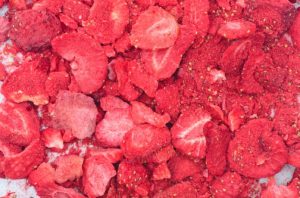A hepatitis A outbreak linked to frozen mixed berries made by Townsend Farms and sold at Costco stores was the third-largest multi-state food poisoning outbreak of 2013. Between May and September, 162 people in 10 states were sickened by the berries. Contaminated pomegranate seeds in the berry mix were identified as the source of illness.
 Although the product was also sold at Harris Teeter stores, no one who became ill bought the product at Harris Teeter. Townsend Farms issued a recall for the Townsend Farms Organic Antioxidant Blend berries on June 4. On July 15, the U.S. Food and Drug Administration (FDA) put Goknur Foodstuffs Import Export Trading of Turkey, the source of the tainted pomegranate seeds, on import alert, meaning that its shipments cannot be imported without proof that the foods are in compliance.
Although the product was also sold at Harris Teeter stores, no one who became ill bought the product at Harris Teeter. Townsend Farms issued a recall for the Townsend Farms Organic Antioxidant Blend berries on June 4. On July 15, the U.S. Food and Drug Administration (FDA) put Goknur Foodstuffs Import Export Trading of Turkey, the source of the tainted pomegranate seeds, on import alert, meaning that its shipments cannot be imported without proof that the foods are in compliance.
Hepatitis A is a highly contagious virus that is spread when microscopic amounts of fecal matter from an infected person are ingested. Not everyone who has the virus shows symptoms. Those who do become sick usually develop symptoms two weeks after exposure. These symptoms, which can last for months, include mild fever, loss of appetite, nausea, vomiting, diarrhea, fatigue, dark urine, clay colored stools and jaundice.
If given within 14 days of exposure, a vaccination for hepatitis A can prevent illness. If you have had the illness in the past, or have been vaccinated in the past, you are protected. Costco and many county health departments offered free vaccinations in the wake of the outbreak.
Those who became ill reported onset of illnesses dates ranged from March 1 to July 26. Forty four percent of the case patients, who ranged in age from 1 to 84 years old, were hospitalized. Fifty five percent of them were women. The outbreak ncluded 11 children who had not been vaccinated.
By state the case count was as follows:Arizona (23), California (79), Colorado (28), Hawaii (8), New Hampshire (1), New Jersey (1), New Mexico (11), Nevada (6), Utah (3), and Wisconsin (2). [Note: The Wisconsin cases were exposed to the product in California, the New Hampshire cases were exposed to the product in Nevada, and the New Jersey case was a household contact of a confirmed case from Colorado. Six of the confirmed cases were secondary exposures from household contacts.]




